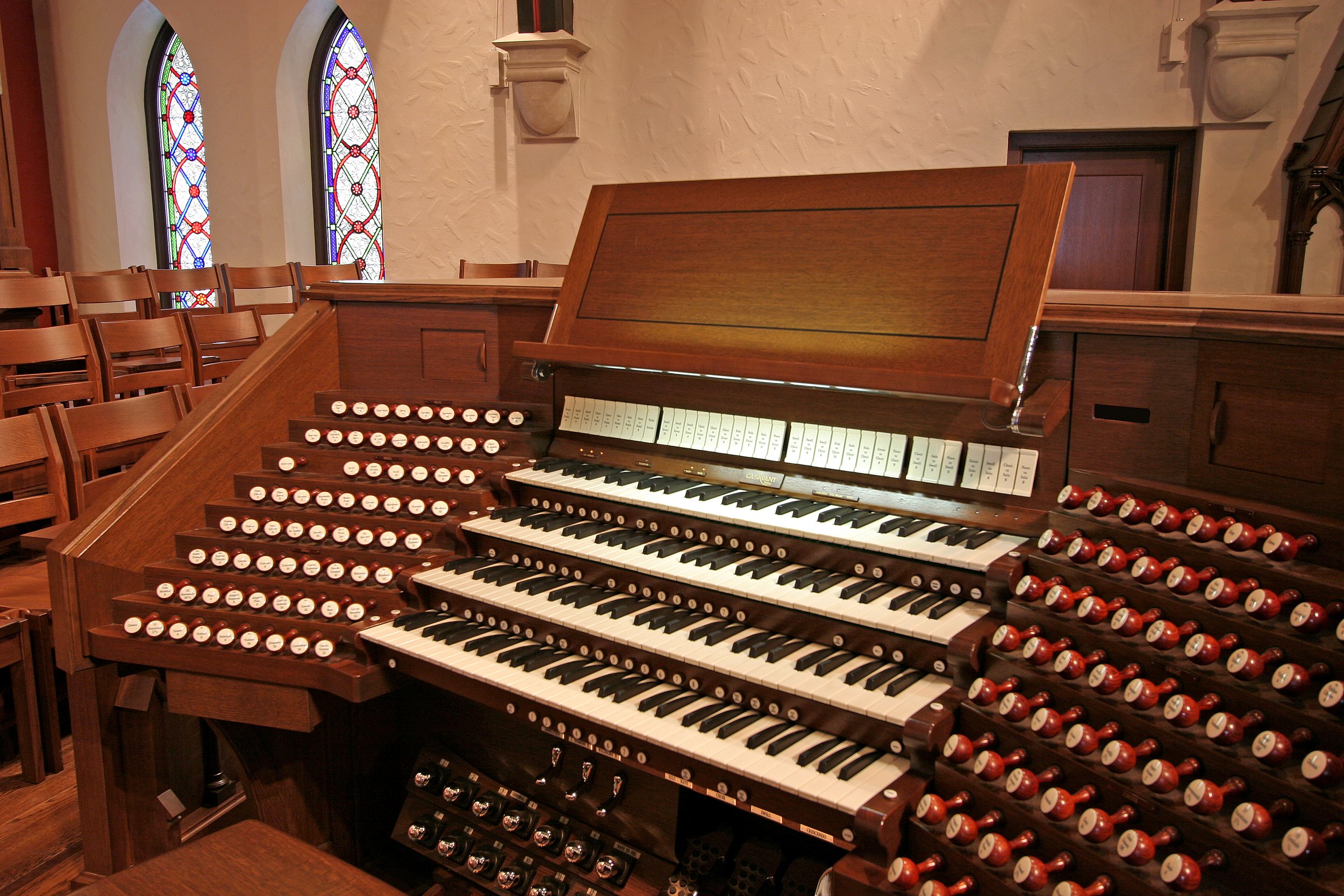
Casavant Frères Organ
OPUS 3856, 2007
St. Paul’s Episcopal Church, Indianapolis
-
Four manuals and pedals, 72 stops, 90 ranks
Chancel Organ: 59 stops, 76 ranks
Electric slider action
Detached movable terraced drawknob console, compass 61/32
Nave Organ: 13 stops, 14 ranks
Electro-pneumatic action
Detached tablet console, compass 61/32
-
The main organ at the front of the chancel is housed in Gothic-style quarter-sawn oak casework that was designed by Casavant’s Benoît Gendron and built in the Casavant workshop. The unenclosed divisions occupy the forward position in the instrument, with the Great organ above the impost immediately behind the façade. The Pedal is divided on each side of the Great. The polished tin façade is taken from the Great and Pedal 16' and 18' principals.
All of the principal stops of the Great, Choir, and Pedal, as well as the Solo Harmonic Flute 8', are made of 70% tin alloy. The remainder of the metal pipes, including the Swell principal chorus, flutes, and reed resonators are made from spotted metal with the exception of the 16' reed in the Pedal division, which has wood resonators.
The principal goals of the tonal design were to provide variety in color and create a singing tone in all registers. The organ’s character is decidedly orchestral in the manner in which its rich, full ensemble and presence is achieved largely by the foundations. Keeping clarity in every register was equally important, to the point that the bass remains clear even when playing full chords with all foundations.
The Great is based upon a 16' principal plenum, which is essential for an instrument in a large space. The chorus is capped by two mixtures and includes the Twelfth 22/3', which led to the addition of the Seventeenth 13/5' in order to provide a bold principal-scaled Sesquialtera II. Flutes at 8' and 4' pitch plus reeds at 16' and 8' pitch complete this twelve-stop division. The Great reeds, which are built with slightly tapered shallots, provide a solid presence and a warm, dark tone that contrasts with the Swell reeds.
A solid grounding of the instrument is provided by the 32' and 16' Pedal stops, including two full-length open flues—the wood Contrabass 16' and metal Diapason 16'. The stopped Sub Bass 16' and duplexing of the manual 16' stops to the Pedal provide considerable flexibility in registering the softest célestes through moderate combinations to full organ. The Pedal also has independent flues at 8' and 4' pitch as well as the customary reed chorus.
The three expressive divisions are located immediately behind the Great and Pedal in concrete walled enclosures. Extra thick shutters with gasket seals provide very effective expression from closed to fully open at 90 degrees. This latitude of control is especially effective for the Tuba Mirabilis, which is on 22 inches of wind. For the best projection of sound of the instrument, as well as the comfort of individuals near the organ, all of the windchests of the manual divisions and pedal trebles are situated well above the heads of the choristers in the chancel.
